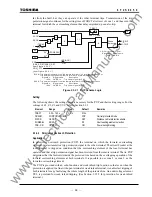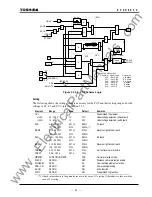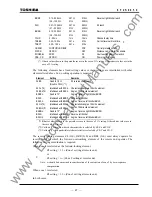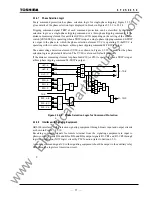
58
6
F
2
S
0
8
5
0
2.3.2 Command
Protection
If operational information from the distance relays located at each end of the protected line is
exchanged by means of telecommunication, it is possible to accurately determine whether or not
the fault is internal or external to the protected line. Each terminal can provide high-speed
protection for any fault along the whole length of the protected line. The GRL100 provides the
following command (carrier) protection using the distance measuring elements.
•
Permissive underreach protection (PUP)
•
Permissive overreach protection (POP)
•
Unblocking overreach protection (UOP)
•
Blocking overreach protection (BOP)
Each command protection can initiate high-speed autoreclose. These protections perform
single-phase or three-phase tripping depending on the setting of the reclosing mode and the fault
type.
Each command protection includes the aforementioned time-stepped distance protection as
backup protection.
2.3.2.1 Permissive Underreach Protection
Application
In permissive underreach protection (PUP), the underreaching zone 1 protection operates and trips
the local circuit breakers and at the same time sends a trip permission signal to the remote terminal.
The terminal which receives this signal executes instantaneous tripping on condition that the local
overreaching element has operated. The overreaching element can be selected as either zone 2 or
zone 3.
Since the trip permission signal is sent only when it is sure that the fault exists in the operating
zone of zone 1, the PUP provides excellent security. On the other hand, the PUP does not provide
sufficient dependability for faults on lines that contain open terminals or weak infeed terminals for
which zone 1 cannot operate. Faults near open terminals or weak infeed terminals are removed by
delayed tripping of zone 2 elements at remote terminals.
Since only the operating signal of the underreaching element is transmitted, it is not necessary to
distinguish a transmit signal from a receive signal. That is, the telecommunication channel can be
shared by the terminals and a simplex channel can be used.
Scheme Logic
Figure 2.3.2.1 shows the scheme logic of the PUP. Once zone 1 starts to operate, it outputs a
single-phase tripping signal S-TRIP or three-phase tripping signal M-TRIP to the local terminal
instantaneously and at the same time sends a trip permission signal CS to the remote terminals.
When the trip permission signal R1-CR or R2-CR or both is received from the remote terminals,
PUP executes instantaneous tripping on condition that either zone 2 or zone 3 has operated.
Whether or not zone 2 or zone 3 is used can be selected by the scheme switch [ZONESEL].
To select the faulted phases reliably, phase selection is performed using the phase selection
element UVC. Phase selection logic in zone 1 tripping is shown in Figure 2.3.1.7 and its operation
is described in Section 2.3.1. Phase selection logic in command tripping is shown in Figure
2.3.2.9. Refer to Section 2.3.2.7.
Off-delay timer TSBCT is provided for the following purpose:
In many cases, most of the overreaching elements at both ends operate almost simultaneously.
However, there may be some cases where they cannot operate simultaneously due to unbalanced
distribution of fault currents. Non-operation of the overreaching elements can occur at a terminal
www
. ElectricalPartManuals
. com
Summary of Contents for GRL100-701B
Page 329: ... 328 6 F 2 S 0 8 5 0 w w w E l e c t r i c a l P a r t M a n u a l s c o m ...
Page 339: ... 338 6 F 2 S 0 8 5 0 w w w E l e c t r i c a l P a r t M a n u a l s c o m ...
Page 351: ... 350 6 F 2 S 0 8 5 0 w w w E l e c t r i c a l P a r t M a n u a l s c o m ...
Page 381: ... 380 6 F 2 S 0 8 5 0 w w w E l e c t r i c a l P a r t M a n u a l s c o m ...
Page 413: ... 412 6 F 2 S 0 8 5 0 w w w E l e c t r i c a l P a r t M a n u a l s c o m ...
Page 417: ... 416 6 F 2 S 0 8 5 0 w w w E l e c t r i c a l P a r t M a n u a l s c o m ...
Page 453: ... 452 6 F 2 S 0 8 5 0 w w w E l e c t r i c a l P a r t M a n u a l s c o m ...
Page 457: ... 456 6 F 2 S 0 8 5 0 w w w E l e c t r i c a l P a r t M a n u a l s c o m ...
Page 473: ...w w w E l e c t r i c a l P a r t M a n u a l s c o m ...
















































